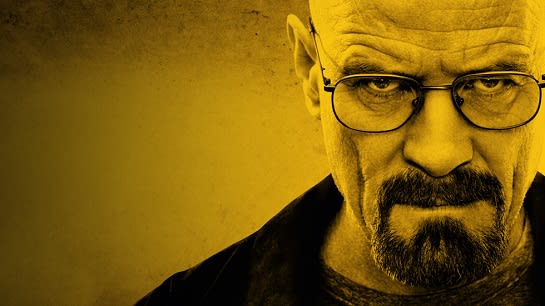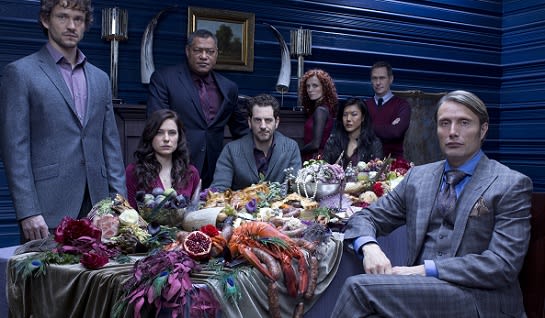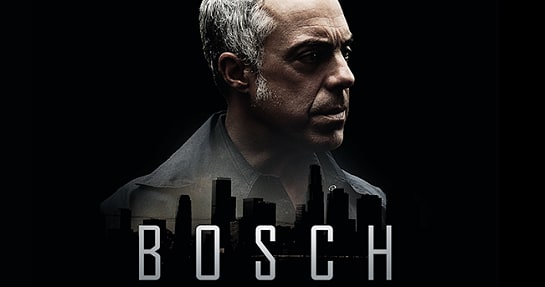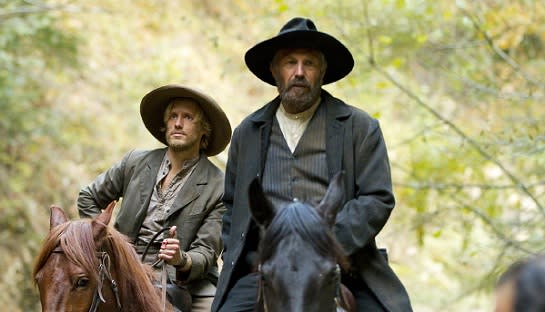Drama funding: Part one
In the first of a two-part feature, we take an in-depth look at just some of the ways that finance can be raised and stretched to produce successful drama.
By Andy Fry 9 Jul 2014

In the first of a two-part feature, we take an in-depth look at just some of the ways that finance can be raised and stretched to produce successful drama.
The market for high end TV drama has never been more buoyant. Once regarded as the preserve of free-to-air networks, the international success of series like Mad Men, Breaking Bad, The Walking Dead, Game Of Thrones and Hatfields & McCoys has encouraged significant investment in drama by cable and satellite channels around the world.
This, combined with investment from video-on-demand platforms such as Netflix and Amazon and leading independent studios like eOne, FremantleMedia and StudioCanal, have transformed the genre. Having said this, drama is notoriously expensive to make.
So here we look at some of the ways producers and broadcasters are making their money go as far as possible.
Breaking Bad
Co-production and distribution
Ambitious, big budget dramas are rarely funded 100% by broadcasters anymore. Typically, they involve 2-3 co-production partners and a distribution company. The exact structure of deals depends on where the production originates but will usually involve some or all of: a US broadcaster, an international channel operator, a programme distributor and another high-profile broadcaster from either the UK, France, Germany or Canada.
US cable channel AMC’s Walking Dead, for example, was initially licensed to Fox International Channels for use on its networks around the world. eOne then came on board to handle the territories and platforms not covered by that arrangement. In the case of Hannibal, Gaumont International TV of France teamed with NBC in the US and SPT Networks, which wanted to headline the drama on its action channel AXN, available in 63 countries worldwide.

Hannibal
The exact set up of high-end dramas varies depending on their point of origin, but the basic principles hold true. The BBC, for example, has worked with HBO (on Parade’s End) and Starz (on Da Vinci’s Demons and Torchwood), with BBC Worldwide handling international distribution rights. StudioCanal-owned producer Tandem set up its crime drama Crossing Lines by partnering SPT Networks and French broadcaster TF1.
This co-pro model is the engine room of modern high-end drama. Around 40-50 US cable networks now spend money on drama (including ‘factual’ channels like A+E and Discovery). By teaming up with partners, they are able to take on ambitious projects that they would not be able to afford by themselves.
Formats/film-to-TV adaptation
Because drama is so expensive, a key part of being a producer or broadcaster is finding ways to a) control development costs and b) maximise the marketing prospects of a show. This is why the sector has seen such a profound shift towards format-based drama and film-to-TV adaptations. Looking first at formats, adapting shows from other territories expedites the development process, thus saving money. It also gives broadcasters some security, because formatted dramas tend to be shows that have worked elsewhere.
The textbook example is Homeland, adapted for Showtime in the US from an Israeli original. Other dramas to have been successfully adapted in recent times include The Bridge, Being Human and The Killing. Upcoming titles set to be reversioned include Broadchurch and The Returned (from France).
As for film-to-TV adaptations, this is a way for producers and broadcasters to launch TV shows with in-built brand awareness. TNT in the US recently signed up to the Transporter TV series, based on the film franchise of the same name. This shift towards brand-based content development has, inevitably, had an adverse impact on true drama origination.
It’s noticeable in the US, for example, how broadcasters are moving away from pilots – preferring instead to go straight-to-series commission. This is partly (though not exclusively) the result of the trends outlined in this section.

Being Human
The rise of Netflix and Amazon
The VOD platforms started out by acquiring rights to movies and archive TV series. But in the last couple of years they have been commissioning original shows as a way of building up their exclusive content credentials. In this respect, they are no different from the likes of HBO, Showtime, Starz and AMC.
The most high-profile example of this was Netflix’s decision to greenlight House of Cards starring Kevin Spacey. An adaptation of a classic UK series, it achieved rave reviews last year. Amazon’s approach has been to commission pilots then ask its audience what they’d like to see turned into a full series. This recently led to a commission for Bosch, a TV drama series based on the famous crime novels by Michael Connelly.
While commissioning originals grabs the most headlines, Netflix and Amazon have also started to play an important role as part-financiers of projects, in much the same way as was described in the first section.
A good example of this was when the BBC decided to cancel Ripper Street after series 2. Amazon, which had achieved good audiences with the show, then stepped in and saved it by agreeing to underwrite a third series. The episodes will be streamed exclusively on the Amazon Prime Instant Video subscription service – previously LoveFilm – before being broadcast on the BBC.
Ben Stephenson, the BBC’s controller of drama commissioning, said: “This deal gives fans another series of the show they love at excellent value to the licence fee payer, ensuring that the BBC can also commission an entirely new, yet-to-be announced drama series.”

Bosch
Tax incentives/cheap locations etc
High-end TV dramas are able to take advantage of many of the same tax incentives as films. The result is that TV crews can be found jetting all over the world in search of soft money. Good examples of this are The White Queen and Parade’s End, which both shot scenes in Flanders, Belgium to take advantage of local subsidies. Game of Thrones also secured incentives to take a share of its production work to Northern Ireland.
Incentives have been a problem for California, which has seen lots of “production runaway” to other US states with better incentives, or to Canada. For example, the initial scripts for Breaking Bad were set in California but, at the suggestion of Sony, the show shot in New Mexico to take advantage of local incentives. The UK was also seeing drama shift to Europe but may see a reversal now it has improved its own incentives.
In addition to subsidies, TV dramas also go looking for low-cost locations. This is what brought A+E’s hit western Hatfields & McCoys to Romania in 2012. Other productions to have gone in search of subsidies/lower costs include The Borgias, Pillars Of The Earth, Going Postal (all to Hungary), Black Sails and Strike Back (South Africa). Game of Thrones also shot in Morocco.

Hatfields & McCoys
Co-production treaties
Co-production treaties allow productions that fit the relevant criteria to qualify for benefits such as tax relief, production rebates or funding in both partner countries. For this reason they are an important consideration for producers. Currently, for example, the UK has a wide variety of co-pro treaties, including a new one with China. Canada has been particularly adept at playing a key role in treaty co-productions. Examples of dramas filmed in Canada within co-production treaties in recent years include The Tudors, Camelot and Titanic.
Part two of this feature includes an insight into product placement; drama as promotion/branded content; non-traditional funding sources; crowdfunding and shortform drama/drama hybrids.
This, combined with investment from video-on-demand platforms such as Netflix and Amazon and leading independent studios like eOne, FremantleMedia and StudioCanal, have transformed the genre. Having said this, drama is notoriously expensive to make.
So here we look at some of the ways producers and broadcasters are making their money go as far as possible.
Breaking Bad
Co-production and distribution
Ambitious, big budget dramas are rarely funded 100% by broadcasters anymore. Typically, they involve 2-3 co-production partners and a distribution company. The exact structure of deals depends on where the production originates but will usually involve some or all of: a US broadcaster, an international channel operator, a programme distributor and another high-profile broadcaster from either the UK, France, Germany or Canada.
US cable channel AMC’s Walking Dead, for example, was initially licensed to Fox International Channels for use on its networks around the world. eOne then came on board to handle the territories and platforms not covered by that arrangement. In the case of Hannibal, Gaumont International TV of France teamed with NBC in the US and SPT Networks, which wanted to headline the drama on its action channel AXN, available in 63 countries worldwide.

Hannibal
The exact set up of high-end dramas varies depending on their point of origin, but the basic principles hold true. The BBC, for example, has worked with HBO (on Parade’s End) and Starz (on Da Vinci’s Demons and Torchwood), with BBC Worldwide handling international distribution rights. StudioCanal-owned producer Tandem set up its crime drama Crossing Lines by partnering SPT Networks and French broadcaster TF1.
This co-pro model is the engine room of modern high-end drama. Around 40-50 US cable networks now spend money on drama (including ‘factual’ channels like A+E and Discovery). By teaming up with partners, they are able to take on ambitious projects that they would not be able to afford by themselves.
Formats/film-to-TV adaptation
Because drama is so expensive, a key part of being a producer or broadcaster is finding ways to a) control development costs and b) maximise the marketing prospects of a show. This is why the sector has seen such a profound shift towards format-based drama and film-to-TV adaptations. Looking first at formats, adapting shows from other territories expedites the development process, thus saving money. It also gives broadcasters some security, because formatted dramas tend to be shows that have worked elsewhere.
The textbook example is Homeland, adapted for Showtime in the US from an Israeli original. Other dramas to have been successfully adapted in recent times include The Bridge, Being Human and The Killing. Upcoming titles set to be reversioned include Broadchurch and The Returned (from France).
As for film-to-TV adaptations, this is a way for producers and broadcasters to launch TV shows with in-built brand awareness. TNT in the US recently signed up to the Transporter TV series, based on the film franchise of the same name. This shift towards brand-based content development has, inevitably, had an adverse impact on true drama origination.
It’s noticeable in the US, for example, how broadcasters are moving away from pilots – preferring instead to go straight-to-series commission. This is partly (though not exclusively) the result of the trends outlined in this section.

Being Human
The rise of Netflix and Amazon
The VOD platforms started out by acquiring rights to movies and archive TV series. But in the last couple of years they have been commissioning original shows as a way of building up their exclusive content credentials. In this respect, they are no different from the likes of HBO, Showtime, Starz and AMC.
The most high-profile example of this was Netflix’s decision to greenlight House of Cards starring Kevin Spacey. An adaptation of a classic UK series, it achieved rave reviews last year. Amazon’s approach has been to commission pilots then ask its audience what they’d like to see turned into a full series. This recently led to a commission for Bosch, a TV drama series based on the famous crime novels by Michael Connelly.
While commissioning originals grabs the most headlines, Netflix and Amazon have also started to play an important role as part-financiers of projects, in much the same way as was described in the first section.
A good example of this was when the BBC decided to cancel Ripper Street after series 2. Amazon, which had achieved good audiences with the show, then stepped in and saved it by agreeing to underwrite a third series. The episodes will be streamed exclusively on the Amazon Prime Instant Video subscription service – previously LoveFilm – before being broadcast on the BBC.
Ben Stephenson, the BBC’s controller of drama commissioning, said: “This deal gives fans another series of the show they love at excellent value to the licence fee payer, ensuring that the BBC can also commission an entirely new, yet-to-be announced drama series.”

Bosch
Tax incentives/cheap locations etc
High-end TV dramas are able to take advantage of many of the same tax incentives as films. The result is that TV crews can be found jetting all over the world in search of soft money. Good examples of this are The White Queen and Parade’s End, which both shot scenes in Flanders, Belgium to take advantage of local subsidies. Game of Thrones also secured incentives to take a share of its production work to Northern Ireland.
Incentives have been a problem for California, which has seen lots of “production runaway” to other US states with better incentives, or to Canada. For example, the initial scripts for Breaking Bad were set in California but, at the suggestion of Sony, the show shot in New Mexico to take advantage of local incentives. The UK was also seeing drama shift to Europe but may see a reversal now it has improved its own incentives.
In addition to subsidies, TV dramas also go looking for low-cost locations. This is what brought A+E’s hit western Hatfields & McCoys to Romania in 2012. Other productions to have gone in search of subsidies/lower costs include The Borgias, Pillars Of The Earth, Going Postal (all to Hungary), Black Sails and Strike Back (South Africa). Game of Thrones also shot in Morocco.

Hatfields & McCoys
Co-production treaties
Co-production treaties allow productions that fit the relevant criteria to qualify for benefits such as tax relief, production rebates or funding in both partner countries. For this reason they are an important consideration for producers. Currently, for example, the UK has a wide variety of co-pro treaties, including a new one with China. Canada has been particularly adept at playing a key role in treaty co-productions. Examples of dramas filmed in Canada within co-production treaties in recent years include The Tudors, Camelot and Titanic.
Part two of this feature includes an insight into product placement; drama as promotion/branded content; non-traditional funding sources; crowdfunding and shortform drama/drama hybrids.
Latest news & features
Promote your services with KFTV
Choose from three profile types - Basic, Silver and Gold
Create ProfileWe offer a range of display advertising opportunities.
Learn More